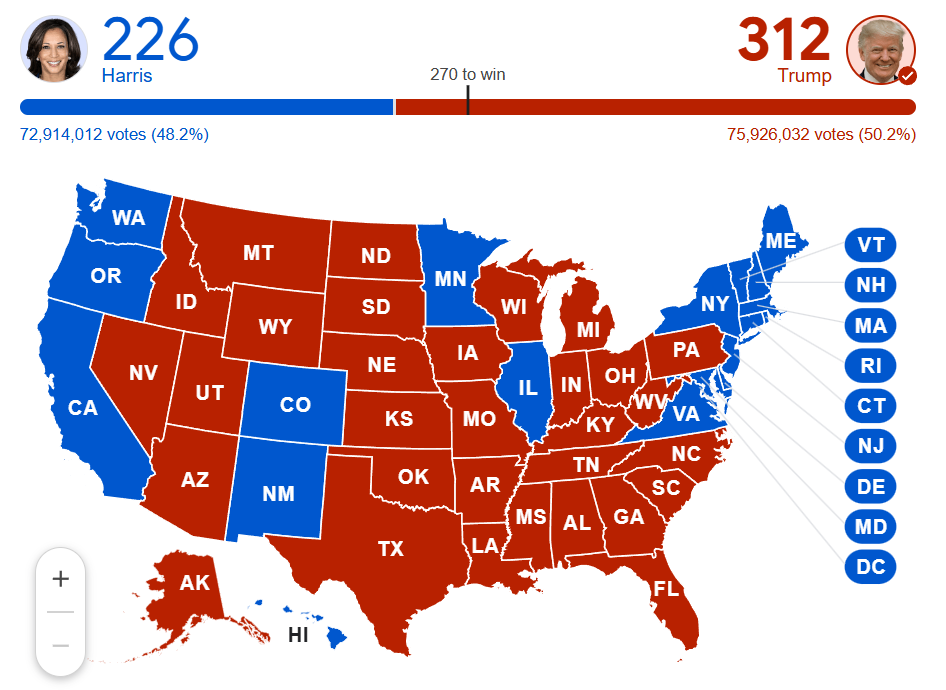Opportunity Audience #2: The Heartland
Decision-makers are in blue; huge numbers of viewers are in red. The data and details on how Hollywood can move beyond 'flyover' stereotypes
Editor’s note: If one looks at the Electoral College map of the 2024 election, one thing is inescapable: The “heartland” is overwhelmingly voting differently than the people who decide what entertainment gets made.
In The Ankler’s look at Opportunity Audiences in July, Cultique’s Sarah Unger identified the heartland as one such underrealized opportunity. But tellingly, they define the heartland as not merely a place but “a mindset and a movement.”
As we continue our reassessment of the American audience, the heartland presents one of the riper chances for Hollywood to reconnect with the majority of the country. “Heartland audiences defy and disrupt stereotypes,” Unger writes. Yet they are reachable, and “now it’s time for Hollywood leaders to get the memo.”
Herewith, the second of Cultique’s three Opportunity Audiences — the heartland — and how to woo them, presented in an encore run. The original below first appeared July 24, 2024:
Sarah Unger, with cofounder Linda Ong, runs Cultique, a strategic advisory that analyzes and translates culture for businesses and brands — including major media and entertainment companies on all platforms. In a special series for paid subscribers, the pair highlight three growth audiences that offer major new opportunities for Hollywood. First, they explored the booming group of Bicultural Latinos, and today they turn their lens to another misunderstood group: Americans in the heartland.
There’s no official map defining the boundaries of the American heartland. Some simply equate it with the Midwest (a dozen states that are home to 20 percent of the U.S. population). Other researchers loop in the Rust Belt and the South — or use this catchall term to include all rural areas and/or the West. Nick Barnes, Nashville-based UTA agent and leader of the company’s Heartland Initiative, describes its denizens as the “200 million people between the Hudson and L.A. Rivers.”
Or what has historically — and foolishly — been dubbed “flyover country,” a reductive phrase that captures Hollywood’s coastal bias better than describing the heartland.
But you don’t have to be a cartographer or a data scientist to know that this huge swath of the U.S. represents a significant market opportunity. Although it’s rooted in geography, the heartland is also a mindset and a movement. Driving (and moving) cross-country several years ago taught me that the U.S. is vast in landscape and psyche — full of vibrant cities, sweeping natural phenomena and endless miles of farmland — and too many people making decisions in media and entertainment have not seen or felt the half of it.
That’s changing: The pandemic prompted some distinct migration away from the urban coastlines, be it temporary (the rise in visits to our National Parks) or permanent — take your pick of studies about investment and job growth in heartland cities (“Silicon Prairie”), or the transformation of places like Bozeman, Montana, dubbed “Boz Angeles” amid a California-led influx. Especially for younger generations, heartland living offers the best and most affordable chance at the American Dream — owning a piece of land, knowing your neighbors and enjoying a calmer pace of life. In June, The New York Times reported on the growing field of "rural studies," and the need to appreciate the valuable connective tissue rural communities offer to our increasingly polarized nation.
In addition, recent years have brought significant new economic energy to the heartland — from both government and private investment: Real estate investment in Q1 2024 is led by heartland locales, according to Realtor.com, with three of the top five markets being in Missouri. Even the famed Americana byway, Route 66, is getting renewed attention as it approaches its 100th anniversary in 2026, in the form of grant awards and EV-friendly refurbishment. The region’s growing economic clout and cultural pull are undeniable.
Now it’s time for Hollywood leaders to get the memo — the one blowing into town on the powerful winds of Twisters’ expectation-exceeding box office debut.
In The Ankler’s second column about opportunity audiences, centered on the American heartland, you’ll learn:
How the heartland audience is growing in cultural import, global influence and buying power
Surprising examples of heartland themes dominating the zeitgeist
The ways heartland audiences defy and disrupt stereotypes
Why faith-based content is booming — and how much more room there is for it to grow
Five ways that Hollywood can tap into the heartland audience and capitalize on the allure of heartland themes for all Americans
What Glen Powell said about what decision-makers in Los Angeles and New York City are missing
This column is for paid subscribers only. Interested in a group sub for your team or company? Click here.
For full access and to continue reading all Ankler content, paid subscribers can click here.







Starting this article by labeling audiences in "blue" or "red" is immediately isolating. Overgeneralized stereotypes is why modern audiences don't trust the media. Framing the realization that audiences are nuanced under the lens of our most recent election contributes to the lack of trust. The same person can enjoy both "Barbie" and "Twisters". The concentration of wealth and decision making in Hollywood alienates diverse voices and nuanced portraits of individuals. People with money will bet on trends - like gamblers. The hard truth is that audiences are exhausted with trends and stereotypes. The Hollywood audience didn't go away nor did they stop enjoying the content that was being produced. They don't have any disposable income to spend on what they enjoy.